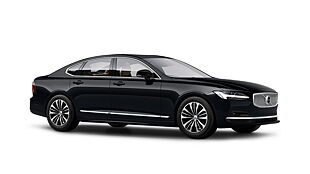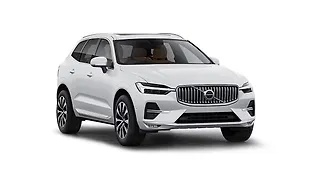Introduction

Not many SUVs have caused as much of a stir as the original Audi Q7. When it was introduced in 2006, the seven-seater soft-roader was a world away from the brand’s sensible range of sedans and hatchbacks. So much so that little did Audi know their maiden attempt at making a luxury SUV would last well for a decade without any major updates whatsoever. Now though, Audi has put an all-new Q7 on sale, and by all-new we mean entirely new. What’s also new for this year is the second-gen Volvo XC90 which has been in the making for longer than we can remember. On paper, the Q7 seems to have it all: snob value, fresh new look, much lighter foundations and a painstakingly detailed interior a certain Tony Stark would approve of. Does Volvo’s much-improved XC90 then stand a chance? Stand by as we compare and fill out the score sheets.
Grand appearance

For a lot of luxury car users in India there comes a point where inevitably a traditional sedan or a jazzy looking crossover just won't cut it in terms of luxury and road presence. It's at that point that XXL-sized SUVs like the Q7 and the XC90 become a sound choice. That being said, those with a liking for the old Q7’s gladiatorial stance would be disappointed to know that this new one is relatively mellowed down and looks more like a jacked-up station wagon than a proper SUV. The reason for this is the reduced proportions (the new Q7 is 37mm shorter and 15mm narrower while virtually the same height).

Despite the lessened footprint, the Q7 feels pretty massive on the road and it unarguably looks better in the flesh than in pictures. Take the front-end for instance: the massive hexagonal grille, which is big enough to fill up the rear-view mirrors of most hatchbacks, is surrounded by dollops of chrome that merges into the clever Matrix head lamps. The minimalistic rear-end, though, is hardly tough looking. If anything, the new Q7 looks a bit too reserved when viewed from the rear and that’s despite the beautifully-detailed taillights and neatly designed twin tail pipes.

The Volvo XC90, on the other hand, expresses a lot through its design. Despite repeated efforts, I struggled to find any particular angle that made the XC90 look uninspiring or even remotely inappropriate. Volvo says there are ‘Scandinavian influences’ everywhere in the new XC90 and we sort of believe them. The T-shaped daytime running lights - called the Thor’s hammer – are unlike anything else in the market. Despite the stark differences in their design approach, both the Q7 and the XC90 offer everything you would expect to see on a luxury SUV: Imposing looks, bona fide road presence and utmost attention to detail.
Lavish interior

Nobody probably does interiors better than Audi and with the new Q7 it is at it again. Audi has followed the minimalistic theme here. And the clean look works so well, we will call it classy. Soft finishes and elegant wood trim are paired with that very minimal touch Audi does oh-so well.
Like in most Audis, the tastefully finished dash has been designed around the driver and does a good job of cocooning the front seat occupants thanks to the wraparound contours around the dash edges and along the doors. Spicing up the cabin is a new 8.3-inch display screen that rises up from the dash when you fire up the Q7.

Moving onto the Volvo after a brief stint in the Q7 brings in a world of changes. Gone is the classy-looking beige interior that exudes a sense of space and serenity and in its place is a far sportier looking cabin finished in some nice-looking brushed metal inserts and an attractive layout. The sporty all-black treatment on our test car made the interior apt for a 400+ horsepower Polestar model than any regular Volvo. Nevertheless, you will immediately notice how high set the dashboard is compared to the Audi which offers a nice view of the road ahead, thanks to the relatively slim and lowered dash. And because most of the controls and the layout of bits are nearer to the driver, the overall sense of space is seriously hampered and as a result, the XC90 ultimately doesn’t feel as roomy as the Q7.

Bad news for the Volvo continues as one starts to fiddle with the knobs and switches, some of which do not really operate with the same level of solidity as in the Audi. The twist-knob switch for the engine, for instance, could have done with a more tactile feel. The rest of the XC90’s cabin is fairly straightforward except for the tablet-like touch screen unit which forms the heart of Volvo’s new in-car control system. While this whole touchscreen modus operandi works rather well for someone like me who prefers having all the controls at one place, there are some, including our testing chief Ameya, who prefer the traditional way with knobs and switches.

Both these vehicles are poles apart in terms of design and packaging, but when it comes to space and comfort they are evenly matched – it’s easy to find a suitable driving position in either vehicle thanks to a plethora of steering and seat adjustment. Similarly, the back seats are supremely accommodating and leave little room for complaints. In this regard, the Q7 pips the XC90 by having better thigh support and though what comes as a neat little touch in the XC90 is the seat base which slides forward as you recline the backrest. A vast interior has always been one of the strengths of both the Q7 and the XC90 and these new models improve things further. Having said that, the third row of seats in both these vehicles remain best suited for kids, more so in the Q7 wherein one is ought to sit with their knees considerably up. In the XC90, things are slightly better thanks to the more accommodating pair of seats.
Equipped to the brim

As flagship luxury SUVs the Q7 and the XC90 are bound to come loaded with equipment, and they are! Common features here include 4-zone air conditioning, panoramic glass roof, leather upholstery, active headlights, auto park and a banging stereo system. While Audi uses a bass-friendly Bose system with as many as 19 speakers, the one in the Volvo by Bowers & Wilkins (also a 19-speaker system) is noticeably clearer. The ultimate party piece, however, comes in the form of the Q7’s virtual cockpit that we have already seen in the new TT. The virtual cockpit, in fact, is a 12.3-inch digital instrument display that can take shape of a traditional instrument cluster or a panoramic 3D map besides a ton of driver-specific information.

Out on the road

The Q7 has more headline grabbing numbers. At 1,995kg for this 3.0 TDI version, the new Q7 is well over 300kg lighter than the previous model, thanks to Audi using Volkswagen’s lightweight and flexible MLB platform. Even Volvo has paid special attention towards weight saving measures by using a lot of aluminium bits underneath the XC90’s shell.
The Audi Q7, then, is not only impressive but also surprisingly good on the move. The familiar 3-litre V6 diesel motor develops 245bhp and 600Nm of torque in this new model and since it has relatively less bulk to lug around, performance is more than adequate for all occasions. Add the quick-shifting 8-speed tiptronic gearbox and quattro all-wheel drive into the mix and the Q7 can hit 100kmph from standstill in just 6.74 seconds. In comparison, the XC90’s 2-litre, four-cylinder engine with 225bhp and ‘just’ 470Nm of torque seems anaemic and with a 0-100kmph time of 8.66 seconds, this Volvo is nowhere as sprightly; however, the Swedish brand is hardly bothered. Volvo, in fact, is betting big on small, turbocharged engines that will soon flood their entire car range.

Coming back to the XC90, it’s down on both displacement and power which should ideally result in it being left in the shadow of the considerably more powerful Q7, and that’s indeed the case here. Be it outright acceleration or in-gear responsiveness, the four-banger powering the Volvo is no match for the more powerful and noticeably more refined V6 lurking under the Audi’s hood.
On its own though, the XC90 is quick to react both in the city and out on the highway, thanks to the flat torque spread and an efficient 8-speed automatic gearbox. If anything, this engine behaves its best on part throttle wherein it can ride the wave of torque and allow the gearbox to upshift early. However, do note that at low to medium speeds, the XC90’s gearbox likes to hunt around a bit more than the Q7’s unit when it comes to finding the right gear. Despite this, the XC90 just about manages to beat the Q7 when it comes to fuel efficiency. During our efficiency runs, the XC90 returned 8.7kmpl in the city and 12.6kmpl on the highway whereas the Audi managed 8kmpl and 11.9kmpl in similar conditions.

As for ride and handling, the Q7 feels slightly more planted over bad roads while the XC90tends to ride a bit clunky across similar surfaces. But, the XC90 has better steering response. It reacts more predictably in individual drive modes and ultimately lends more feedback too. Lastly, it’s worth noting that the Q7 is more manageable and easier to navigate through traffic in. The low-set dashboard and slim A-pillars play their part here.
Verdict

Volvo XC90 Inscription Luxury
Price: Rs 77.90 lakh
Rank: 2nd
Final Score: 446/600
It’s been a long wait for the all-new XC90, an SUV that was primarily designed to broaden Volvo’s appeal as a legitimate rival to the likes of Audi, BMW and Mercedes. And while it’s already done that and managed to put Volvo in the big league, the biggest hurdle yet to the XC90’s potential success will be to outclass its rivals – a feat that ought to be anything but easy. With its bold new design, solid road manners and a well put together cabin, there’s a lot to appreciate in the XC90 though inherently it means there is a lot to pay for as well. Carrying a base price of Rs 64.90 lakh for the Momentum version and a cool Rs 77.90 lakh for the fully loaded Inscription version that you see here, the XC90 is either on par or noticeably more expensive than its rivals from established brands.

Audi Q7 45 TDI Technology Pack
Price: Rs 77.50 lakh
Rank: 1st
Final Score: 468/600
The new Audi Q7 has lost some of that brutish charm of the old model and instead, has gone for a more universally acceptable look which, incidentally, has already raised quite a few eyebrows. However, the questionably mellowed-down look should not come in the way of your buying decision because Audi has done a commendable work overall on the new Q7. With its considerably lightened foundations, a powerful yet efficient drivetrain and a sumptuously finished interior, the new Q7 has taken the game forward considerably and is once again at the top of its game.
Pictures: Kapil Angane
Specification
| CAR NAME | Audi Q7 | Volvo XC90 |
| Variant | 45 TDI Technology Pack | Inscription Luxury |
| ENGINE | ||
| Fuel | Diesel | Diesel |
| Installation | Front, longitudinal | Front, transverse |
| Displacement | 6 cyls, 2967cc | 4 cyls, 1969cc |
| Bore/stroke | 83.0/91.4mm | 82.0/93.2mm |
| Valve gear | 4 valves per cyl DOHC | 4 valves per cyl DOHC |
| Power | 245bhp at 3250rpm | 222bhp at 4250rpm |
| Torque | 600Nm at 1500rpm | 470Nm at 1750rpm |
| Power to weight | 130.09bhp per tonne | 110.9bhp per tonne |
| Torque to weight | 293.8Nm per tonne | 238.5Nm per tonne |
| Gearbox | 8-speed automatic | 8-speed automatic |
| CHASSIS & BODY | ||
| Kerb weight | 2060kg | 2011kg |
| Tyres | 255/55 R19 | 275/45 R20 |
| Spare | Space saver | Space saver |
| STEERING | ||
| Type | Rack and pinion | Rack and pinion |
| Type of assist | Electric | Electric |
| Turning circle | 12.4m | 11.8m |
| BRAKES | ||
| Front | Ventilated Discs | Ventilated Discs |
| Rear | Ventilated Discs | Ventilated Discs |
| Anti-lock | Yes | Yes |
Test Data
| CAR NAME | Audi Q7 | Volvo XC90 |
| Variant | 45 TDI Technology Pack | Inscription Luxury |
| PERFORMANCE & BRAKING | ||
| 0-20kmph | 0.72s | 0.86s |
| 0-40kmph | 1.64s | 2.11s |
| 0-60kmph | 2.93s | 3.79s |
| 0-80kmph | 4.67s | 5.91s |
| 0-100kmph | 6.74s | 8.66s |
| 0-120kmph | 9.41s | 12.30s |
| 20-80kmph in 3rd gear | 4.41s | 5.42s |
| 40-100kmph in 4th gear | - | - |
| 80-0kmph | 25.25m | 24.67m |
| FUEL ECONOMY | ||
| City | 8kmpl | 8.7kmpl |
| Highway | 11.9kmpl | 12.6kmpl |
| Tank size | 75 litres | 71 litres |
| Range | 635km | 644km |
| INTERIOR MEASUREMENTS | ||
| Front | ||
| Legroom(Max/min) | 810/580mm | 800/640mm |
| Headroom(Max/min) | 1020/940mm | 990/910mm |
| Shoulder room | 1540mm | 1510mm |
| Backrest height | 500mm | 630mm |
| Rear | ||
| Legroom(Max/min) | 930/690mm | 810/670mm |
| Ideal legroom | 810mm | 790mm |
| Headroom | 950mm | 950mm |
| Shoulder room | 1490mm | 1460mm |
| Seat base length | 480mm | 470mm |
| Backrest height | 660mm | 600mm |
| Boot | 290-2075litres | 368-1868litres |
| Length/width/height | 540/1210/470mm | 570/1150/500mm |
| Loading lip height | 760mm | 720mm |
Score sheet
| Parameters | Max points | Audi Q7 |
Volvo XC90 |
| DRIVING FEEL | |||
| Steering response | 20 | 12 | 13 |
| Directional stability | 25 | 14 | 14 |
| Engine characteristics | 25 | 18 | 16 |
| Gearbox | 20 | 17 | 16 |
| Visibility | 10 | 8 | 7 |
| Intermediate results | 100 | 69 | 66 |
| SPACE | |||
| Front Space | 25 | 20 | 20 |
| Rear space | 25 | 20 | 18 |
| Feeling of space | 20 | 18 | 16 |
| Boot space/flexibility | 20 | 16 | 17 |
| Payload | 10 | 8 | 8 |
| Intermediate results | 100 | 82 | 79 |
| IN THE CABIN | |||
| Comfort equipment | 25 | 13 | 13 |
| Operatibility | 15 | 10 | 11 |
| Feel of quality | 20 | 18 | 16 |
| Front seats/ingress | 20 | 17 | 17 |
| Rear seat/ingress | 20 | 17 | 16 |
| Intermediate results | 100 | 87 | 83 |
| PERFORMANCE | |||
| Acceleration | 25 | 20 | 17 |
| Top speed | 10 | 6 | 6 |
| Driveability | 30 | 24 | 22 |
| Braking | 25 | 18 | 17 |
| Environment | 10 | 7 | 7 |
| Intermediate results | 100 | 75 | 69 |
| ROAD MANNERS | |||
| Ride quality | 30 | 24 | 22 |
| Turning circle | 15 | 12 | 11 |
| Handling | 20 | 15 | 15 |
| Manoeuvrability | 15 | 11 | 10 |
| Safety | 20 | 17 | 17 |
| Intermediate results | 100 | 79 | 75 |
| PRICE | |||
| Price | 45 | 39 | 37 |
| Resale | 10 | 8 | 6 |
| Warranty | 10 | 7 | 7 |
| Fuel efficiency | 35 | 22 | 24 |
| Intermediate results | 100 | 76 | 74 |
| Total | 600 | 468 | 446 |

![वोल्वो xc90 [2015-2021] इमेज वोल्वो xc90 [2015-2021] इमेज](https://imgd.aeplcdn.com/272x153/cw/ec/18626/Volvo-XC90-Right-Front-Three-Quarter-164462.jpg?wm=0&q=80)

























